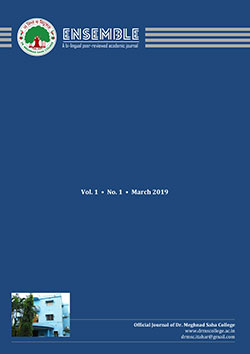NAMAVALI SHAWL IN INDIAN PAINTINGS: TRAVERSING TILL THE TWENTIETH CENTURY
Abstract:
Paintings and sculptures, especially the early ones, showcasing daily life, are useful to study for learning about society and its people. In India, from the paintings of different eras, we may come to know about the social, religious, and cultural life of a particular period and region. Namavali shawls are those ritualistic shoulder clothes, woven or printed in multifarious materials and worn by the Indian Hindu priests or devotees, preferably males, performing ceremonial rites. These shawls are also termed as Ramanami dupattas, in the northern and western part of India. In many states, including West Bengal, other than worships, these are also used to cover the heavenward corpse, during his last journey. It can be assumed that the tradition of using namavali shawls, started with the Bhakti movement emerging in India during the 15th Century. As the Vaishnavite culture flourished in eastern India with Sri Chaitanya Mahaprabhu, the sixteen word ‘Hare Krishna’ mantra became famous. Therefore, it started appearing on the namavali shawls too. In the paintings titled ‘Bhakta Chhipa, the devout cloth printer’, ‘Raja Balwant Singh of Raghogarh with his son Jai Singh worshipping Rama and Sita’, ‘Lady on the Steps’ and ‘Three Women performing propitiatory and purificatory rites by the River Bank’, the painters has showcased namavali shawl as an important element, to emphasize more on the central characters of the paintings. So, these paintings are undoubtedly great treasures of Indian Art.
Keywords: Hindu, ritual-cloth, artists, artworks, museums
https://doi.org/10.37948/ensemble-2020-0201-a017
Views: 5652



